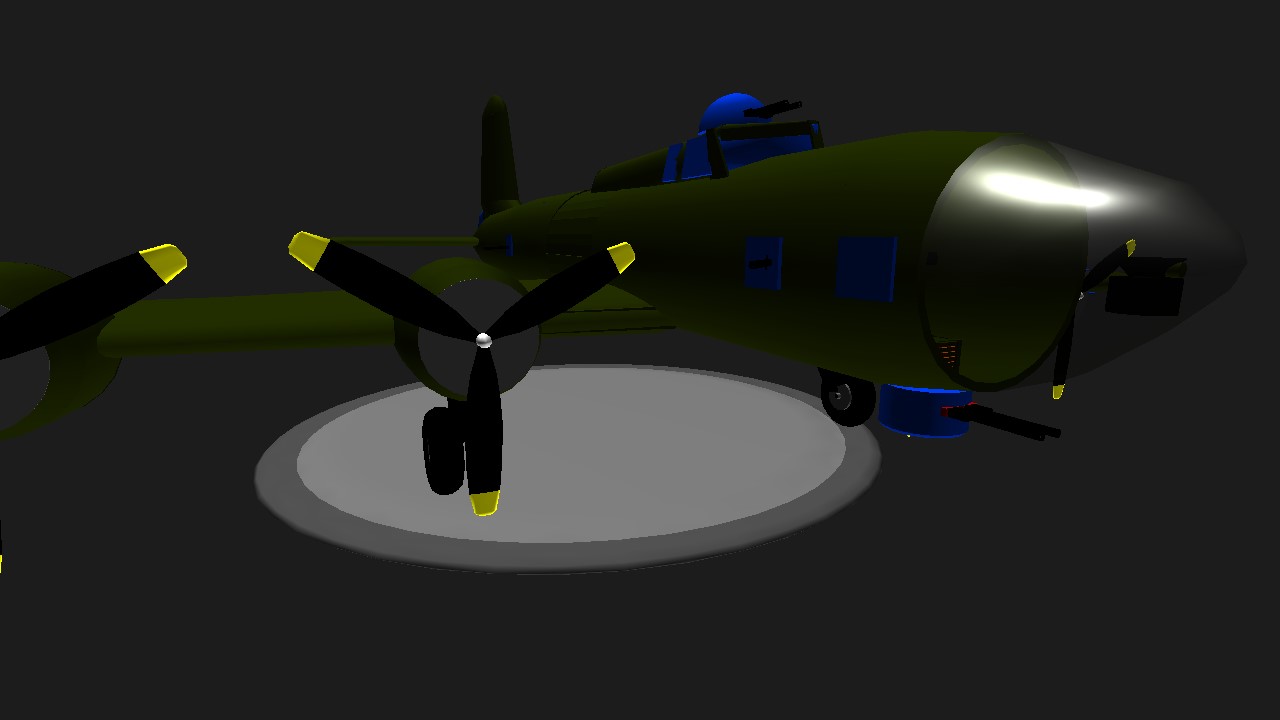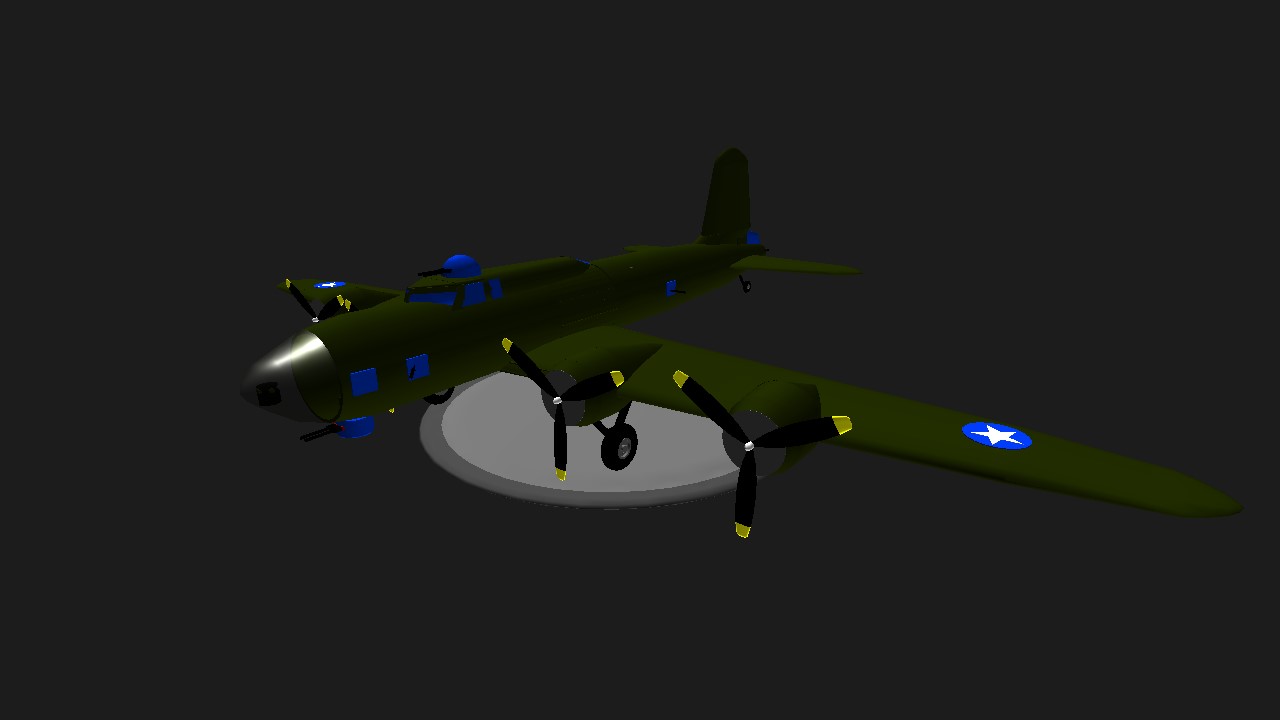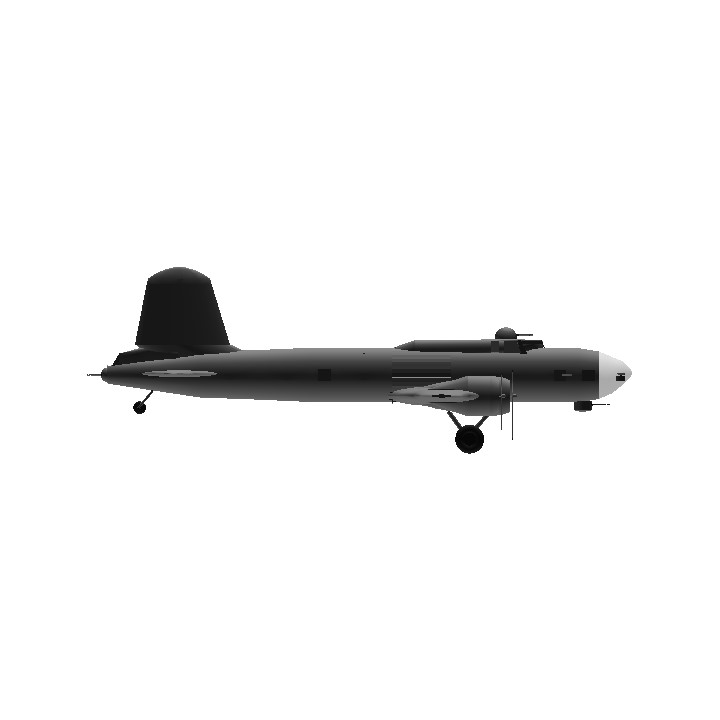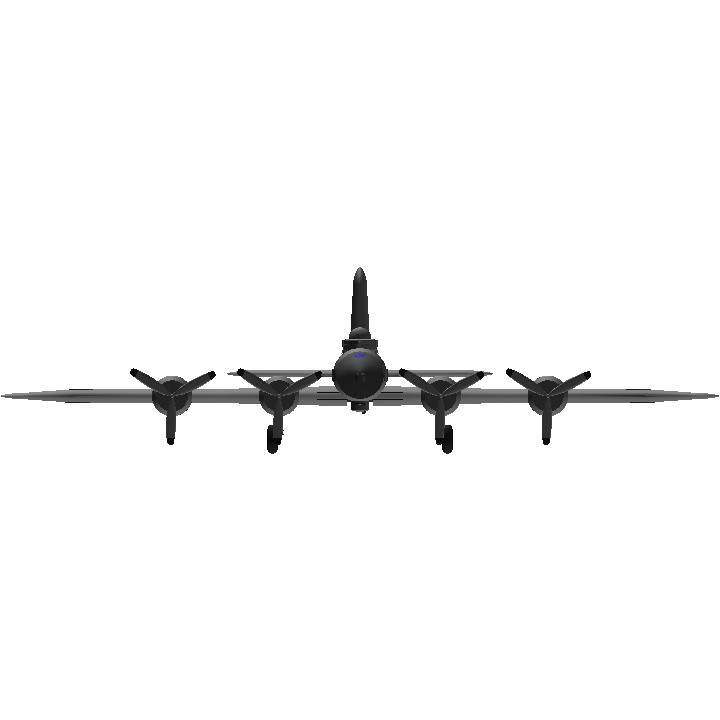The Boeing B-17 Flying Fortress is a four-engined heavy bomber developed in the 1930s for the United States Army Air Corps (USAAC). Competing against Douglas and Martin for a contract to build 200 bombers, the Boeing entry (prototype Model 299/XB-17) outperformed both competitors and exceeded the air corps' performance specifications. Although Boeing lost the contract (to the Douglas B-18 Bolo) because the prototype crashed, the air corps ordered 13 more B-17s for further evaluation. From its introduction in 1938, the B-17 Flying Fortress evolved through numerous design advances,[4][5] becoming the third-most produced bomber of all time, behind the four-engined Consolidated B-24 Liberator and the multirole, twin-engined Junkers Ju 88.
Credits:
Mr Shenanigans for autoleading turrets
SnoWflakE0S for Bomsight
AG:1 For bomb bays
AG:6 For dropping ball turret
Specifications
General Characteristics
- Predecessor Boeing B-17G Flying Fortress
- Created On Android
- Wingspan 130.2ft (39.7m)
- Length 98.6ft (30.1m)
- Height 33.8ft (10.3m)
- Empty Weight 21,436lbs (9,723kg)
- Loaded Weight 83,154lbs (37,718kg)
Performance
- Horse Power/Weight Ratio 0.24
- Wing Loading 41.1lbs/ft2 (200.6kg/m2)
- Wing Area 2,023.6ft2 (188.0m2)
- Drag Points 27556
Parts
- Number of Parts 257
- Control Surfaces 5
- Performance Cost 1,603






